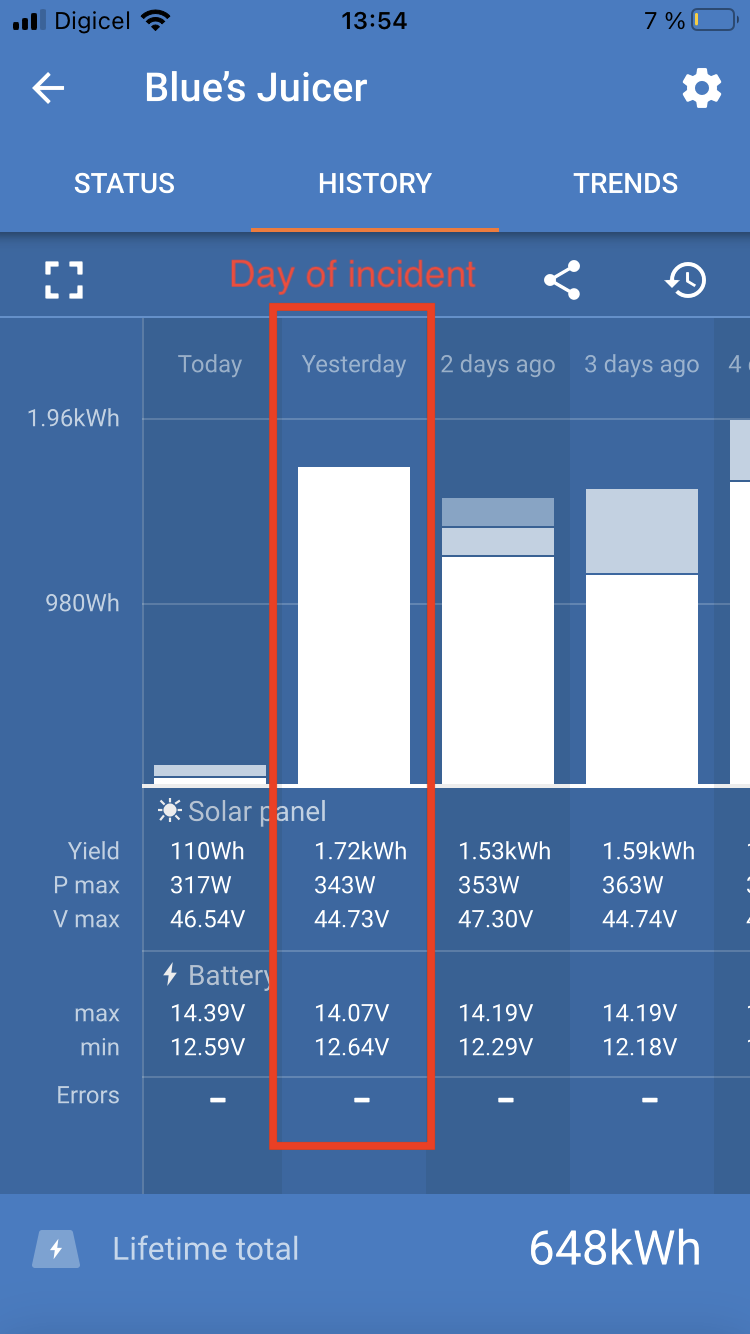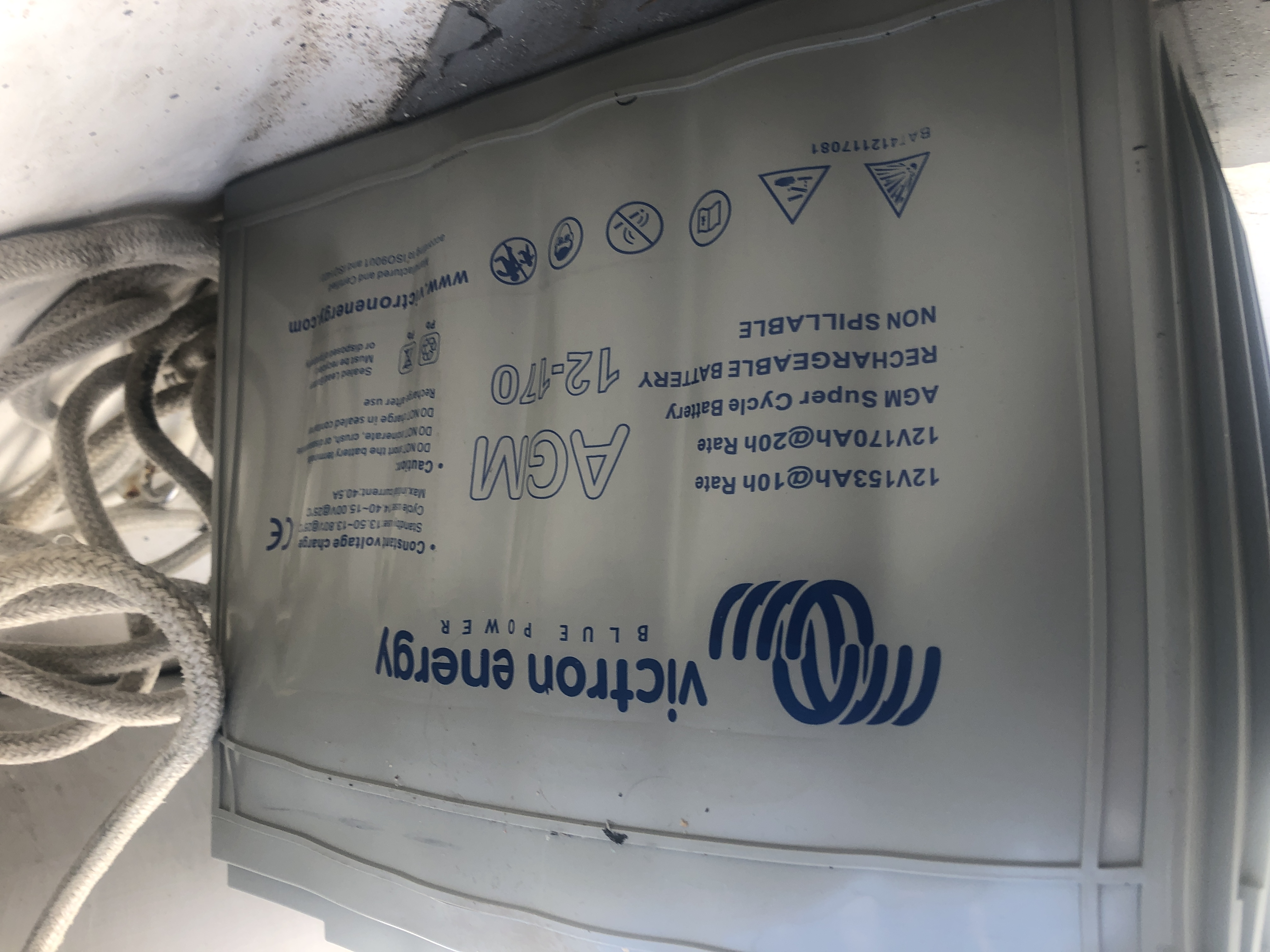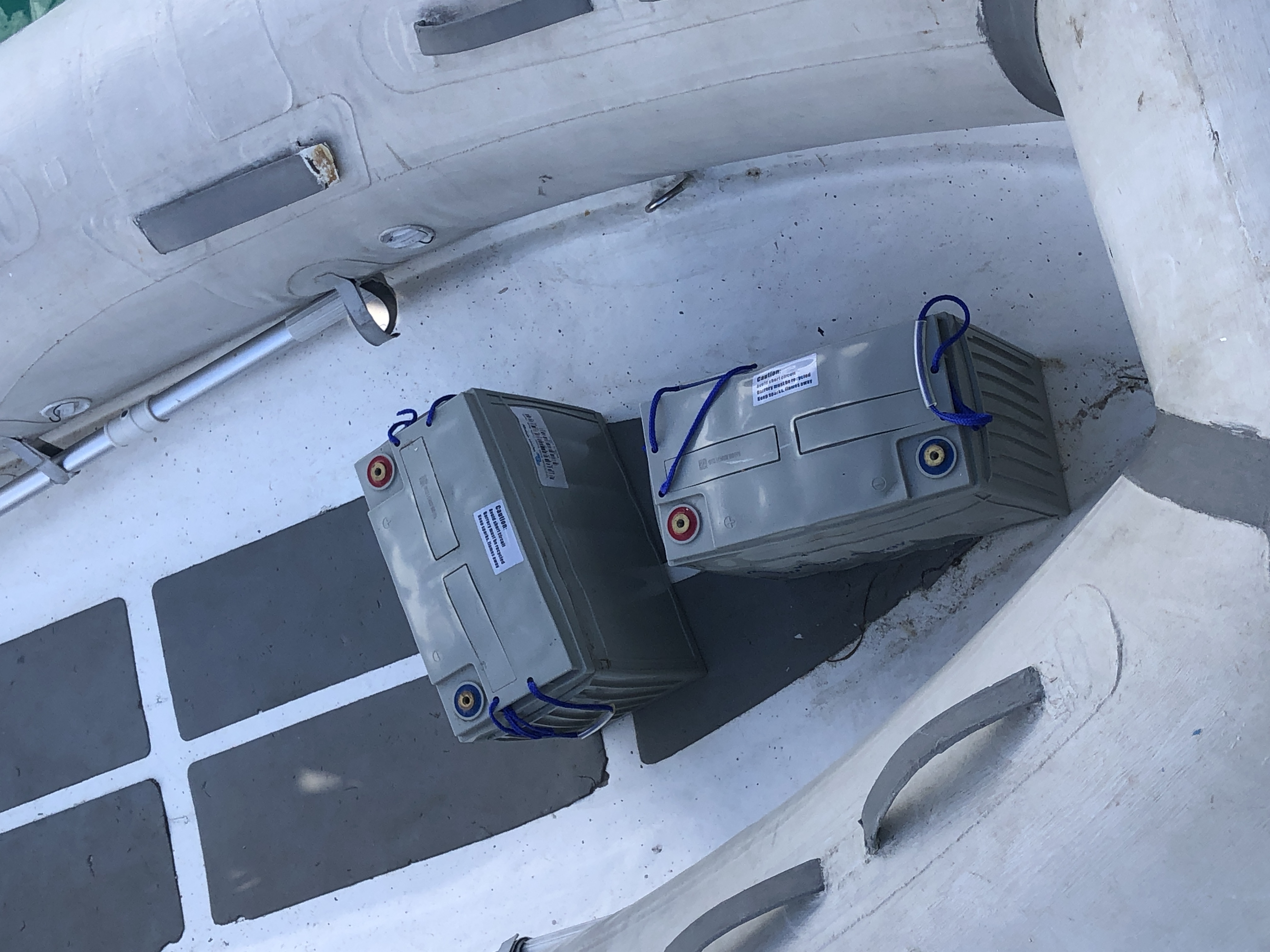Hello Community,
Our domestic battery bank almost blew up on a 17 hour motor sail.
We are really happy that the Victron battery chassis are very very strong.
This is the setup, domestic battery, solar, and MPPT installed in Q3 2020:
- 2x170Ah Victron AGM Super Cycle domestic bank
- Victron 100/50 MPPT Charge Controller
- Victron BMV 712 Battery Monitor
- Victron 12/2000 230V Inverter Q3 2021
- 400W LG Bifacial Solar
- Volvo Penta MD2030 diesel with alternator
- Bosch 90Ah starter battery 2019
- Victron Argofet Battery Isolator
- 70mm2 marine grade wire on batteries to bus bars and to inverter
Turn of events (It may be TMI but I will give location too, to make sense of distances and daytimes):
- We left the boat on a mooring ball for 3 months in Grenada, the MPPT has been topping up very consistently just enough to keep the batteries full
- We came back and used the boat on anchor and did short 1-3 hour sails under engine around the bays, all was well, batteries nice and full
- Then we did a big jump under engine that blew up the batteries:
- Monday morning we leave Tobago Cays to Bequia, a 5 hour motor trip
- Monday noon we stay on anchor in Bequia, it is sunny
- Monday evening we start our next leg after sunset, through the night we motor and get 10 hours of alternator power
- Tuesday all day, we keep motoring and arrive in Martinique in the afternoon around 2:30 PM
- After dropping anchor and stopping the engine we hear sizzling noise and smoke from the battery compartment. The batteries are smoking hot and bulging. We switch off ALL power and disconnect the batteries, take them out into the dinghy where they leak and melt the dinghy non-skid due to heat. We dispose them later that day at the marina.
- We noticed no high voltage. After disconnecting, the batteries were at 13.5V
- The starter battery is at 12.9V and has no damage
- The MPPT is set to the Victron AGM deep cycle preset
- The MPPT has bulked 100% and put 1.7kWh into the bank during Tuesday!
I am suspecting the following:
- The alternator kept all batteries topped up, starter and domestic, but somehow the MPPT kept pushing all day as well, into domestic only. This is my only explanation to as why the starter is fine but the domestic overcharged.
Why we didn’t notice before a long full day motor trip:
- On anchor there is no alternator and we use solar only to top up batteries. It is a well balanced system and we get and use between 1.5kWh and 2kWh per day
- The alternator provides around 25 to 30 Amps when it detects a medium full battery, it dials down to 5 to 0 Amps when full, it is working as expected
- The only time where both systems were in full use was on this full day long motor trip. I believe there is something wrong in the detection of needed current from the MPPT, misinterpreting as to what the battery voltage really is, when the boat is being used in conjunction with the alternator charge current.
Now, we installed Mastervolt 2x160Ah AGM, the only available option for us on Martinique. I am monitoring charge cycles on anchor as well, screenshots provided. You can see time of day at the top.
mastervolt charging screenshots after fresh install.zip
I attach all data I could gather in this post. “Yesterday” in the MPPT screenshots is the day of passage. “Today” is on the new Mastervolts. Even on the days before the incident, the MPPT should not have charged that much in my opinion, as we motored as well. I am confused this happened because the MPPT setting was set on the exact battery preset and the batteries are 2 years old, being actively used for about 1 year. We rarely go below 12.3. I am very happy that the Victron battery chassis held up strong and didn’t catch fire. But there's quite another mix of emotions when I think about how this could happen with an all-Victron charging and storage setup.

On our next daytime motor passages we will monitor the MPPT charging patterns closely and when in doubt switch off the MPPT to prevent overcharging.
SmartSolar_ChargerMPPT_100_50 Victron AGM.vcsf.zip
SmartSolar_ChargerMPPT_100_50 new Settings mastervolt .vcsf.zip
Battery_monitorBMV-712_Smart mastervolt.vcsf.zip
Battery_monitorBMV-712_Smart.vcsf.zip



Your thoughts on my hypothesis? And more importantly, how can I prevent this in the future?



